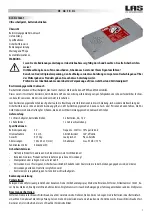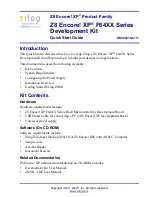
TROUBLESHOOTING & TIPS
Here are some tips that may optimize performance. We also recommend to review
your editing card documentation for additional information.
Use FastTrak66 as D: or other non-bootable drive in a Striped Array
For A/V editing, keep the original system boot drive on the standard IDE controller
as C: drive. Partitioning software such as FDISK will see the array as one physical
drive, D: drive (or later). This will prevent file fragmentation and provide better
accessibility to the array.
Optimize Array for “Performance”
The Promise FastBuild BIOS Utility autosetup menu allows optimizing the array for
A/V Editing . The default Performance setting (Striping) selects a Stripe Block size
of 64. This larger block size is recommended for the data streaming requirements of
A/V editing. You may select an even larger block size in manual mode (see chapter
4).
FastBuild (tm) Utility 1.xx (c) 1995-99 Promise Technology, Inc.
[ Auto Setup Options Menu ]
Optimize Array for:
Performance
Typical Application usage: A/V Editing
[ Auto Setup Configuration ]
Mode ...................................................... Stripe
Stripe Block Size ......................................... 6 4
Drive used in Array ...................................... 2
Array Disk Capacity ........................... 13044
[ Keys Available ]
[
] Up [
] Down [
,
, Space] Change Option [ESC] Exit [Ctrl-Y] Save
Tips for Audio/Video Editing
Re-Configure PCI Latency Setting
The PCI Latency setting appears in some Mainboard BIOS. The setting governs
how much time is allocated to service each PCI slot. Promise recommends a valueof
64. An optimal value is neither too high nor too low and will vary from system to
system.
8-4
Summary of Contents for FastTRAK66
Page 9: ...Introduction ThisPageIntentionallyLeftBlank ...
Page 17: ...Hardware Installation ThisPageIntentionallyLeftBlank ...
Page 45: ...FastCheckTM Monitoring Utility ThisPageIntentionallyLeftBlank ...
Page 57: ...Operating System Installation THIS PAGE LEFTINTENTIONALLYBLANK ...













































